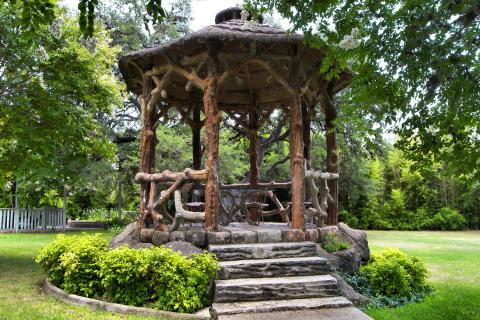History of Gazebos

The developing ubiquity of the gazebo is not an emotional change ever, as should be obvious these structures have been around us for quite a while.
All through time gazebo history has been sensational. A few history specialists trust, "gazebo" was initially utilized as a part of 1752. Gazebos have had a few names - pagodas, summerhouses, screen houses pergolas and arbors. Notoriety of gazebos has risen and fallen with various circumstances however despite everything they are an excellent approach to improve a lawn or yard.
The starting point
Gazebos have existed since thousand years back. Be that as it may, they were not utilized as a major aspect of garden sight to start with. They were worked as towers or lights on the tops of houses. The thought was to pick up the encompassing perspective of the family unit. On the other hand talking, getting a charge out of the garden view is additionally a sufficient motivation to set a gazebo on a house.
In Egypt
Gazebos began in Egypt in 5000 BC. They were the part of the fantasies of royals who wished to make paradise on earth. Part of the Egyptian legacy, their conviction was that the gazebos will run with them to the life from now on. Gazebo sort wall paintings were determined to the tombs. The most punctual ever tomb for the Egyptians were worked in 1400 BC. Gazebos around then were utilized as sanctuaries as well.
In Rome and antiquated Greece
Gazebos in these districts were worked to look like little sanctuaries. To talk basic, these gazebos were the branch stalls of the bigger sanctuaries. These were marble gazebos by and large. As the populace in Greece developed, there came a pattern among the rich and honorable building summerhouses along the Mediterranean coasts. Gazebos were for the most part found in these beach front getaways.
In Persia
The Islamic logic and culture was the trademark of Persian gazebos. They were frequently alluded to as "booths". There was a lot of assortment among these gazebos. They were very brilliant tents now and again explained up to 2-story structures. They had marble segments and brilliant seats for royals. Summer was insufferable in Persia. So a large number of the gazebos were worked crosswise over pools or streams. The thought was to let the cool water to manage the temperature inside.
In china
China has had exceptional centrality with gazebos-particularly considering the way that gazebos in this part of the world were fit with Chinese culture and legacy. The primary concern of Chinese gazebos or pagodas was expansive size and allegorical looks. Gazebos were called teahouses and had awesome importance amid the Tea Ceremonies. Much the same as the cutting edge time, gazebos of that period were viewed as a place to rest, ruminate, and accomplish profound agreement. They were worked to appreciate the magnificence of the garden.
The renaissance
The Italians as of now fabricated belvederes. These were not gazebos but rather had awesome closeness to gazebos.